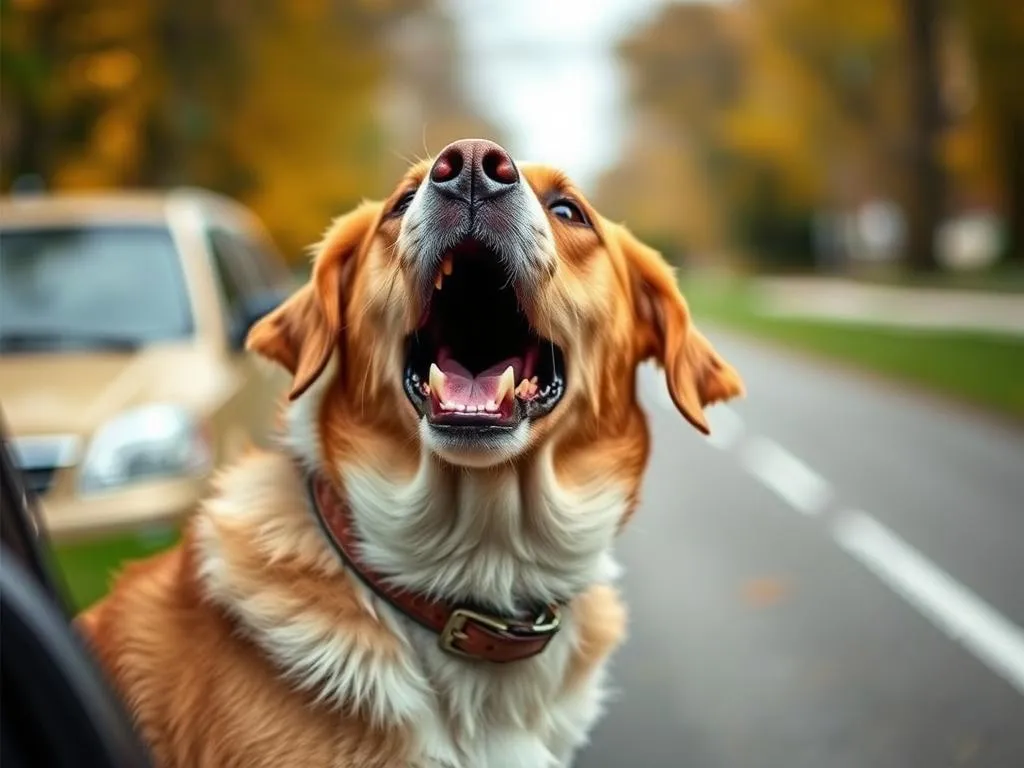
Introduction
Have you ever been out for a peaceful walk with your dog, only to be startled by a sudden outburst of barking as a car zooms past? Dogs barking at cars can be not only annoying but also a concern for both your dog’s safety and the tranquility of your neighborhood. Addressing this behavior is crucial, as it can stem from various underlying issues such as instinct, fear, boredom, or protective instincts. In this comprehensive guide, we will delve into the reasons behind this behavior, effective training techniques, additional strategies, and preventative measures to help you manage and ultimately stop your dog from barking at cars.
Understanding the Behavior
Why Do Dogs Bark at Cars?
To effectively tackle the issue of barking at cars, it’s essential to understand the underlying reasons for this behavior.
Instinctual Behavior
Barking is a natural instinct for dogs. They are inherently territorial animals, and when they see a moving object like a car, they may perceive it as a threat to their territory. This instinct drives them to bark as a way of alerting their owners and warding off what they perceive as intruders.
Fear and Anxiety
For some dogs, barking at cars can stem from fear and anxiety. The rapid movement of vehicles can startle them, prompting a barking response as a way to cope with their fear. Such reactions are often more prevalent in dogs that have not been socialized properly or have had negative experiences with vehicles in the past.
Boredom and Lack of Exercise
A significant factor contributing to excessive barking is boredom. Dogs require both physical and mental stimulation. When they don’t receive enough exercise or engaging activities, they may resort to barking as a form of entertainment or expression of pent-up energy.
Protective Instincts
Many dogs have a strong protective instinct towards their families. They may bark at cars as a means of protecting their territory or their owners from perceived threats. This behavior can be particularly pronounced in breeds known for their guarding instincts.
Identifying Triggers
To effectively train your dog to stop barking at cars, it’s vital to identify what triggers the behavior.
Observing Your Dog
Careful observation of your dog’s barking behavior can provide valuable insight. Keep track of when the barking occurs—Is it during certain times of the day? Does it happen with specific car models or colors? By understanding these patterns, you can better address the issue.
Environmental Factors
The environment plays a significant role in your dog’s behavior. Busy streets with high traffic, loud noises, and unfamiliar sights can heighten your dog’s anxiety and trigger barking. Understanding these factors can help you create a training plan that addresses these stimuli.
Dog’s Breed
Different dog breeds have varying tendencies when it comes to barking. For instance, herding breeds may be more prone to barking at moving objects due to their instinctual drive to herd. Understanding your dog’s breed characteristics can inform your training approach.
Training Techniques to Stop Barking at Cars
Initial Steps
Before diving into specific training methods, it’s essential to lay the groundwork for effective training.
Establishing a Calm Environment
Creating a distraction-free zone is critical for successful training sessions. Start in a quiet area of your home or yard where your dog feels comfortable. The goal is to minimize external stimuli that could trigger barking during training.
Using Positive Reinforcement
Positive reinforcement is a powerful training tool. It involves rewarding your dog for desired behaviors instead of punishing them for undesirable ones. This method encourages your dog to repeat the behaviors that earn them praise or treats.
Specific Training Methods
Once you’ve established a calm environment and a foundation of positive reinforcement, you can implement specific training techniques.
Desensitization Technique
Desensitization involves gradually exposing your dog to cars while rewarding calm behavior. Start by observing cars from a distance where your dog feels safe. As they remain calm, reward them with treats or praise. Gradually decrease the distance to the cars over time, maintaining the positive reinforcement.
Counter-Conditioning
Counter-conditioning is about changing your dog’s emotional response to cars. Instead of associating cars with fear or anxiety, you can help them associate cars with positive experiences. Whenever a car passes by, offer your dog a treat or engage them in a game. This method helps them reframe their perception of cars from a threat to a positive experience.
Command Training
Teaching your dog commands like “quiet” or “leave it” can redirect their focus away from barking. Start by training these commands in a controlled environment before gradually introducing them in situations where cars are present. Use treats and praise to reinforce the desired behavior when they respond correctly.
Consistency and Patience
Daily Training Routine
Establishing a daily training routine is crucial for success. Consistency is key; regular practice helps reinforce the training and makes it more effective. Aim for several short training sessions throughout the day rather than one long session.
Tracking Progress
Keeping a log of barking incidents and training successes can provide valuable insights into your dog’s progress. Note down situations that trigger barking and how your dog responds to training. This record can help you adjust your approach as needed.
Additional Strategies
Providing Alternatives
In addition to training, providing alternatives can help manage your dog’s barking behavior.
Redirecting Energy
Physical exercise is vital in curbing excessive barking. Engage your dog in regular walks, playtime, and interactive games that allow them to expend excess energy. A tired dog is less likely to bark at cars.
Mental Stimulation
Incorporating mental stimulation into your dog’s routine can also help reduce boredom-related barking. Interactive toys, puzzle games, and training exercises keep their minds engaged and distracted from potential triggers.
Professional Help
When to Seek Assistance
If you find that your dog’s barking persists despite your best efforts, it may be time to seek professional help. Signs that indicate the need for assistance include extreme anxiety, aggression, or if the barking is affecting your dog’s well-being or your quality of life.
Choosing a Dog Trainer
When selecting a dog trainer, look for someone with experience in behavioral issues, particularly with barking. Ask for recommendations, read reviews, and inquire about their training methods to ensure they align with your values and goals.
Preventative Measures
Setting Boundaries
Creating boundaries can significantly reduce your dog’s barking at cars.
Creating a Safe Space
Designating a dog-friendly area away from street traffic can provide a safe haven for your dog. This area should be secure and comfortable, allowing your dog to relax without the stress of passing cars.
Using Fencing and Barriers
Physical barriers, such as fencing or hedges, can help minimize your dog’s access to barking triggers. These barriers not only keep your dog safe but also reduce their exposure to passing vehicles.
Socialization
Importance of Socializing Your Dog
Socialization is crucial in helping dogs become well-adjusted and confident. Exposing your dog to different environments, sounds, and situations can help reduce anxiety and fear-related barking.
Organized Playgroups
Joining dog parks or organized training classes can offer valuable socialization opportunities. Interacting with other dogs and people in a controlled setting can help your dog learn to respond calmly to various stimuli, including cars.
Conclusion
In conclusion, understanding why your dog barks at cars is the first step in addressing this behavior. By employing effective training techniques, providing alternatives, and implementing preventative measures, you can help your dog become more comfortable with their environment and significantly reduce their barking. Remember that patience and consistency are essential throughout this process. A well-behaved dog not only enhances your quality of life but also contributes to a harmonious neighborhood. With dedication and the right approach, you can transform your dog’s barking behavior into calmness and confidence.









